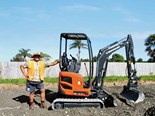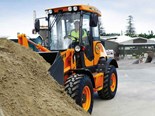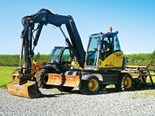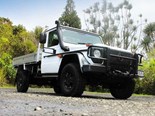Test: Caterpillar 323
 The latest Caterpillar 323
The latest Caterpillar 323
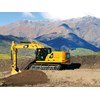
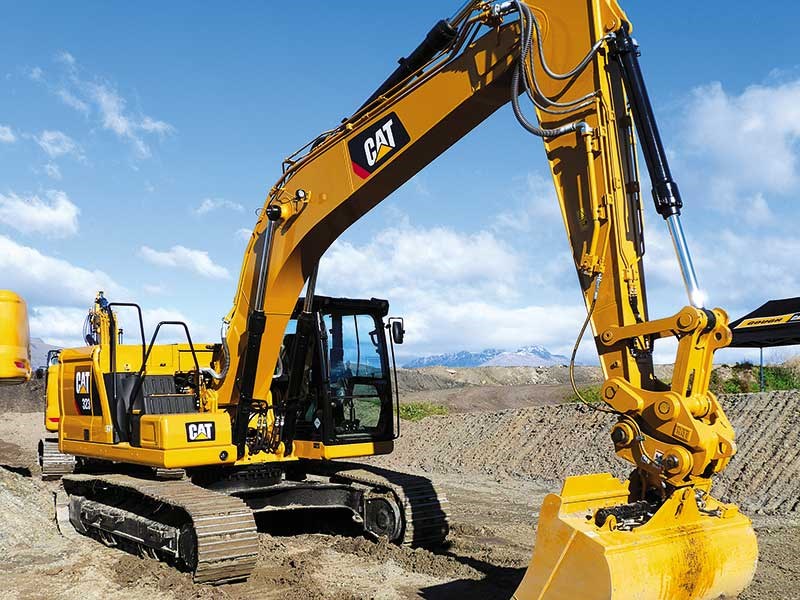 Operating weight of the Cat 323 is 24,400kg
Operating weight of the Cat 323 is 24,400kg

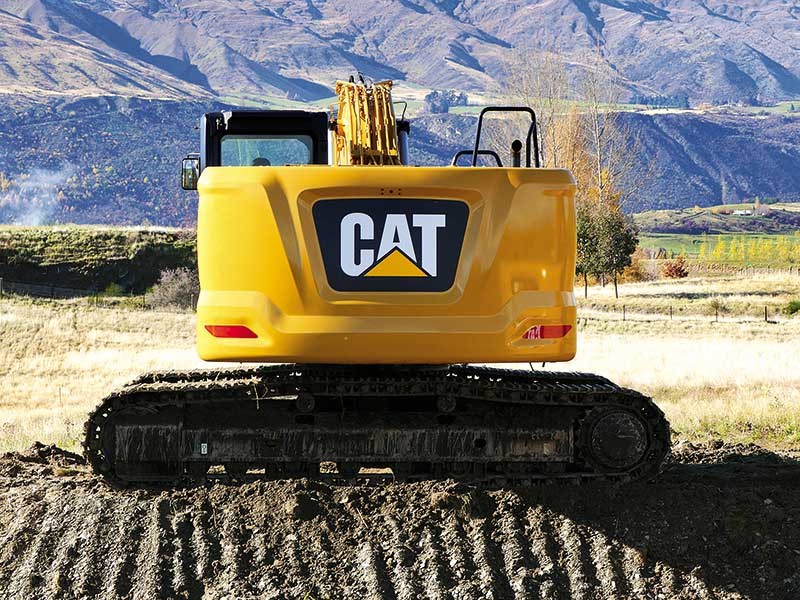 The Cat 323 is the result of a well-thought-out design process
The Cat 323 is the result of a well-thought-out design process

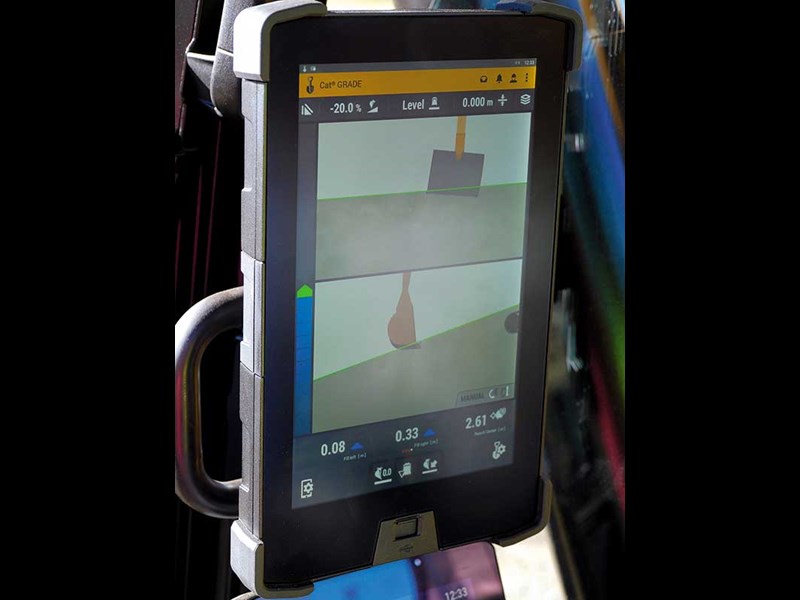 The Cat 323 features two high-resolution monitors
The Cat 323 features two high-resolution monitors

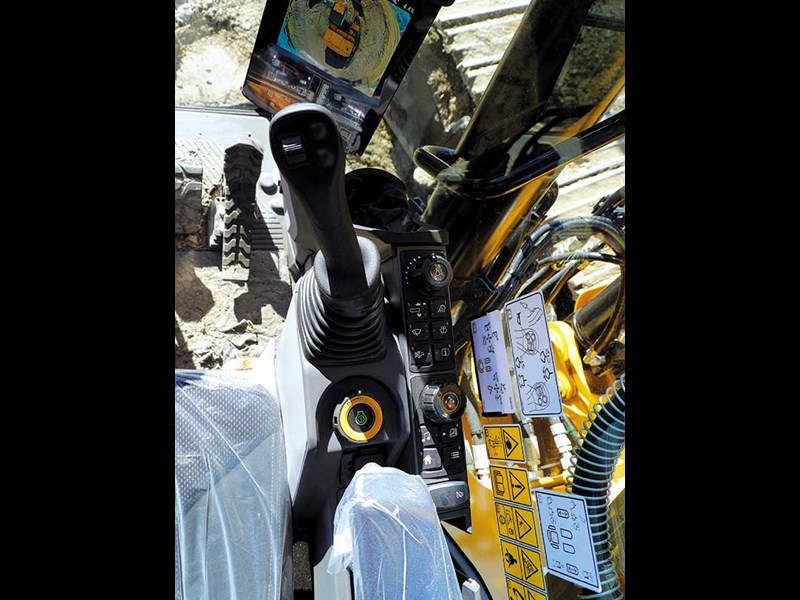 The controls are electrically operated
The controls are electrically operated

 360-degree camera
360-degree camera


|
|
The latest Caterpillar 323
|

|
|
Operating weight of the Cat 323 is 24,400kg
|

|
|
The Cat 323 is the result of a well-thought-out design process
|

|
|
The Cat 323 features two high-resolution monitors
|

|
|
The controls are electrically operated
|

|
|
360-degree camera
|
The Ed climbed aboard the latest Caterpillar 323 and got a feel for the next generation of American iron at its release in Queenstown recently.
There’s no denying that Caterpillar holds the title of the most well-known construction brand in the world and it must be acknowledged that recognition of this sort takes dedication, equipment manufacturing skills, and an understanding of people using the machinery.
With the release of their next generation range of excavators, Caterpillar has dealt a card that invites all-comers to show their hands. Well, at least those were my thoughts after exiting the cab of the Caterpillar 323 recently.
New Zealand had to wait a few months for the machines to find their way Down Under, but the wait didn’t diminish the enthusiasm of Kiwi Caterpillar owners and fans who were keen to finally see the much-talked-about excavators in the flesh.
New Caterpillar excavator models
Touted as the most significant change to its excavator programme in 25 years, Caterpillar unveiled its three new models at the end of 2017. The 20- to 25-tonne range was covered with the release of the Cat 320GC (20,500kg), Cat 320 (22,500kg), and, Cat 323 (24,400kg) models in one swoop. Note: The operating weight for the US version of the Cat 323 is 25,100kg.
Cat 323—machine of choice
Obviously, my machine of choice to try out from the three latest machines was the largest model on display—the Cat 323. Powered by a Caterpillar C7.1 ACERT engine rated at 121kW (162hp), in operation, the excavator is designed to work most efficiently at 1650rpm, ramping up to 1800rpm when in travel mode.
Another interesting feature of the Cat 323 and the rest of the new range is a redesigned hydraulic system, negating the need for pilot lines and enabling the operator controls to be replaced by electronic units. The reduction in lines reduces pressure loss, which, in turn, lowers fuel use. It also means up to 20% less oil is needed to satisfy the hydraulic system.
Digital tools
Caterpillar has put serious thought into addressing the availability of skilled operators by providing the latest digging assistance technology as standard fare on the Cat 320 and Cat 323 models, with the Cat 320GC kept aside as a low-option offering (see sidebar).
No need for aftermarket but integrated at the factory as standard is the 2D dig assist system, which gives the operator the ability to dig to a precise depth and contour, with the option of upgrading to a Cat Grade Advanced 2D or Cat Grade 3D, making the two machines a serious piece of arsenal for getting that all-important correct depth efficiently and with minimum wastage.
Cat Payload
Additionally and what we were told is an industry-first of significant benefit for operators working in quarries or cut-and-remove-from-site jobs is the Cat Payload system fitted as standard from the factory. Otherwise known as scales and commonly found on wheel loaders and logging equipment, these systems are probably one of the most under-rated pieces of technology that can significantly help reduce fuel and wage costs while maximising production outputs, so credit to Caterpillar
for adding this system to their selected excavator models.
Cat LINK
Tying all of the digital technology together is the Cat LINK hardware and software systems, compiling data and enabling real-time analysis of the machine’s operating internals and production rates. Modern business owners would find this tool valuable in keeping tabs on the machine and seeing how it is performing.
Safety features
Some of the electronic safety devices on-board the Cat 323 include built-in ISO-certified FOPS, a 360-degree camera, and 2D E-Fence, which uses sensors to keep the machine within set points when working in confined spaces; all designed to keep both the operator and site workers as safe as possible.
We also shouldn’t forget to mention all the daily maintenance checks can now be carried out at ground level; this initiative addresses an important safety issue by keeping the operator away from slippery surfaces on the upper body area.
Hopefully, it will also encourage the less-energetic types to carry out their pre-start checks correctly, although, the temptation to warm the machine up from a distance with the remote-start cell phone app may keep some away from the machine until they are ready to begin excavating.
In-cab comfort
Like me, I’m sure someone stepping across to a Caterpillar 323 would be suitably impressed by the amount of gadgetry at their disposal, however, outwardly, the only real differences that catch the eye are the eight- and 10-inch twin touchscreen high-resolution monitors.
Despite their obvious required location in front of the operator, once settled into working mode, they do not create unnecessary blind spots. Thanks to the lack of hydraulic pilot lines, the electronically controlled joysticks can be easily changed to individual operator preferences through one of the monitors.
The more portly operators will appreciate the wide seat, and if you’re lucky enough to be on the receiving end of a Premium cab package, then expect to enjoy the comfort of a heated and cooled air suspension seat.
Lower maintenance costs
Air, fuel, and hydraulic filters in the Cat 323 are now grouped for quicker servicing and their capacities increased to give a longer lifespan. Caterpillar says over the course of 12,000 hours, they calculate the average Cat 323 could use up to 820 less hydraulic oil and reduce the need for filter changes by up to 50.
At work
For some reason, I assumed the electronic operator controls would have a gaming console feel, and while the machine’s levers were completely different to the buttons of a game controller, my expectation was that less sensitivity would be delivered to my hands due to the lack of fluid-less pilot lines. This assumption proved incorrect with the operating feeling so familiar that it was some time before realising I was using a non-hydraulic control system.
After spending time getting used to the machine, a windrow of recently stockpiled soil offered the chance to see how the balance of the Cat 323 compared to other machines I have operated in the same weight category.
Pushing out to maximum reach at ground level of 9870mm, the opportunity to overbalance on the soft soil where the excavator was positioned was high but, unsurprisingly, the Cat 323 remained sure-footed as I tried my best rock and roll moves to displace the machine.
The difficulty with the site was the lack of dense material to see how the machine performed under a bit of stress, so my time behind the controls consisted of getting accustomed to the rhythm of the machine in bulking out mode while trialling the Cat Payload functions. Again, nothing I asked the machine to do within reason raised cause for alarm.
Verdict
As one would expect, the Caterpillar 323 excavator is the result of what must have been a lengthy, well-thought-out design process, and in operation, it did not disappoint.
Noise levels inside the cab were more than acceptable, and it may even be one of the quietest excavators I have operated, even when working at full power.
In the hands of experienced operators—and by this I mean people who understand the digital technology they have on-hand—the Cat 323 has the ability to provide a substantial output when the machine’s production systems are used as their designers intended.
The Cat 323 with 2D or 3D will be competitively priced due to the factory integrated systems versus the more expensive aftermarket system of other manufacturers.
Caterpillar 323 specifications
| Operating weight | 24,400kg |
| Engine | Cat C7.1 ACERT |
| Emission | Tier 4 Final |
| Gross power | 122kW (164hp) @ 1800rpm |
| Max reach at ground | 9870mm |
| Max dig depth | 6730mm |
| Max load height | 6480mm |
| Hydraulic oil max flow | 429L/min |
| Max hydraulic oil pressure | 35,000kPa |
Keep up to date in the industry by signing up to Deals on Wheels' free newsletter or liking us on Facebook.











